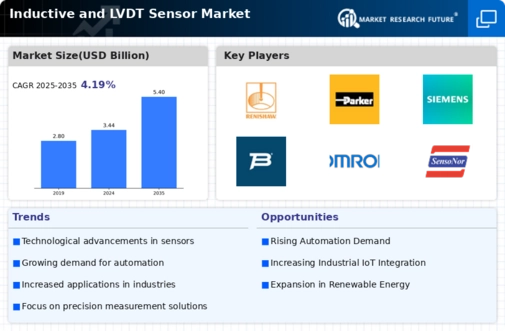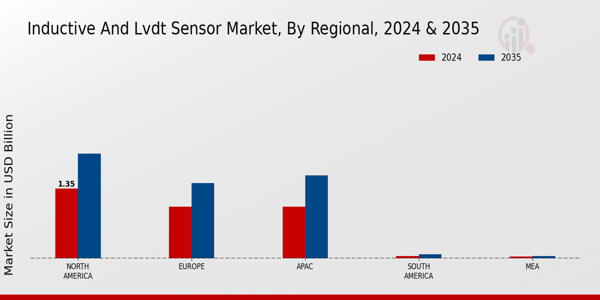The competitive landscape of the Inductive and LVDT Sensor Market demonstrates a dynamic interplay among key players striving to capture market share and innovate in response to evolving technological demands. Inductive sensors, known for their robust performance in challenging environments, and Linear Variable Differential Transformers (LVDT), recognized for their precision in measuring linear displacement, have both garnered substantial attention across various industrial applications. Competition is driven by factors such as advancements in sensor technology, increasing demand for automation, and the growing trend of Industry 4.0.
This landscape is characterized by players who are not only enhancing the performance and reliability of their offerings but also focusing on cost-effectiveness and reduced size to cater to diverse industrial requirements. Overall, the competitive insights in this market reflect a promising growth trajectory influenced by both established players and emerging entrants seeking to leverage technological advancements and enhance user accessibility. Renishaw holds a significant presence in the Inductive and LVDT Sensor Market, showcasing strengths that include an extensive portfolio of high-precision sensors designed to meet the rigorous demands of industrial automation and metrology.
Known for its commitment to innovation, Renishaw continuously invests in research and development to enhance sensor performance, ensuring that its products remain at the forefront of technological advancements. The company’s strong reputation for reliability and accuracy positions it favorably among customers seeking precise measurement solutions. Additionally, Renishaw's ability to offer comprehensive support and tailored solutions allows it to maintain robust customer relationships and contributes to its competitive advantage in the market. The company’s strategic collaborations and partnerships further strengthen its market presence, enabling it to penetrate various sectors where advanced sensor technologies are crucial.
Parker Hannifin is another key player in the Inductive and LVDT Sensor Market, recognized for its wide-ranging expertise in motion and control technologies. The company's strengths lie in its innovative approach to developing highly sensitive and durable sensors that can operate effectively in diverse environmental conditions. Parker Hannifin leverages its extensive engineering resources to create cutting-edge solutions that address the specific needs of industrial applications, enhancing the operational efficiency of its clients. The company is also known for its exceptional customer service, which includes offering tailored solutions and extensive technical support, thereby solidifying its relationships with customers across various industries.
Furthermore, Parker Hannifin’s strategic focus on automation and smart manufacturing integrates well with trends such as the Internet of Things, positioning it as a competitive player capable of meeting evolving market demands. The synergy between its established expertise and commitment to innovation enables Parker Hannifin to sustain its competitive edge in the Inductive and LVDT Sensor Market.






















